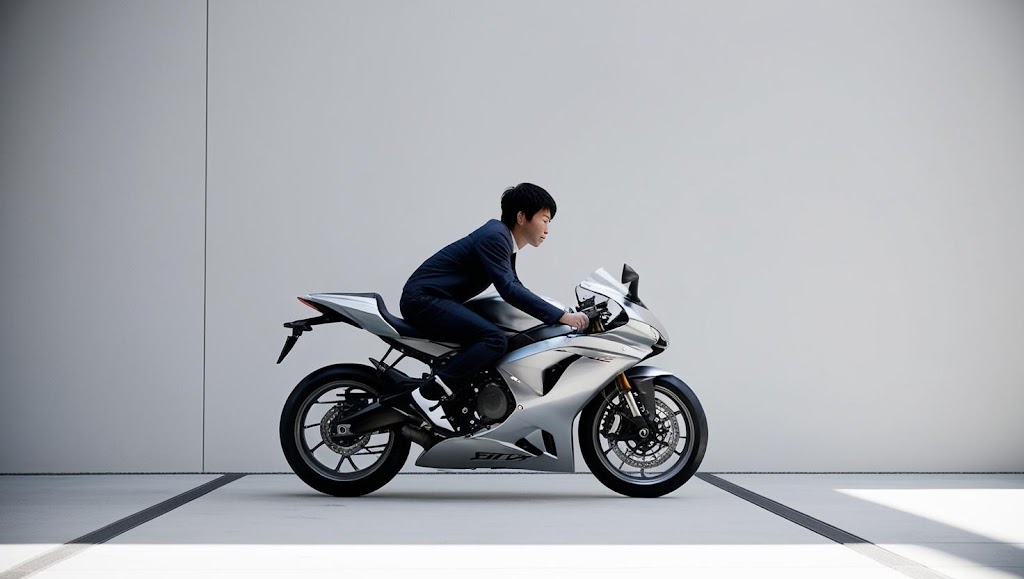Safe driving is a top priority for every driver, including men. Amidst dense traffic and various road conditions, awareness and application of safe driving tips are the key to reaching your destination safely. This article is here to share 6 important tips that men must know and apply to ensure a safe and comfortable driving trip, both daily and long distance.
Vehicle Preparation is the Main Key
Before starting a trip, ensuring that the vehicle is in prime condition is a fundamental step in safe driving that should not be missed. A thorough check of several crucial components is highly recommended. Carrying a first aid kit is also highly recommended to handle minor injuries that may occur.
With thorough vehicle preparation, you have reduced the potential for technical problems on the road that can be dangerous. This check should be done routinely, not only when going on a long trip, but also before starting your daily safe driving activities. Remember, a well-maintained vehicle is a reflection of a responsible driver.

Beware of Extreme Weather
Driving safely in extreme weather such as heavy rain and strong winds requires extra vigilance and special strategies to maintain safety. When it rains, visibility will be drastically reduced, and the road surface will become more slippery. Reduce speed and keep a safe distance from other vehicles.
If the intensity of the rain is very high and visibility is limited, consider pulling over and waiting for the rain to stop. Water puddles can be a trap. Avoid driving through puddles at high speed, because it risks losing steering control. Water puddles can also cover holes in the road that can damage vehicles.
Facing strong winds also requires its own tricks. Strong winds, especially from the side, can be very dangerous, especially for motorcyclists or small cars. Hold the steering wheel with both hands firmly and be ready to make course corrections if the car feels like it is shifting in the wind.
If you are driving a tall vehicle such as a van or truck, the risk of being hit by the wind is greater, so slow down and be extra careful when passing other large vehicles or crossing bridges. Avoid parking under large trees or power lines that are prone to falling in high winds.
If there are strong winds accompanied by storms and lightning, pulling over is the best option. Find a safe shelter and avoid being in open spaces. Remember, extreme weather is unavoidable, but with the right preparation and strategy, the risk of accidents can be minimized significantly. Your safety comes first above the desire to get to your destination quickly.
The Importance of Keeping Your Body Fit
The physical condition of the driver is a determining factor for road safety. A fit body and a focused mind are crucial, especially when traveling long distances or driving safely for a long time. Therefore, maintaining a prime physical condition is a must. Before starting your trip, make sure you get enough rest.
Lack of sleep can cause fatigue and decreased concentration, which is very dangerous when driving. Avoid forcing yourself to drive if you feel sleepy or tired. If the trip is quite long, plan to stop and rest periodically at rest areas. Use this rest time to stretch, take a light walk, or even take a short nap if possible. Rest areas provide adequate facilities for safe and comfortable rest.
Proper nutrition intake also plays an important role in maintaining stamina during safe driving. Eating a balanced nutritious diet before starting the trip will provide the energy needed. Avoid eating too much or too heavy which can cause drowsiness. Bring enough snacks and drinking water to accompany the trip.
Staying hydrated is essential, especially in hot weather. Drink water regularly to prevent dehydration, which can cause headaches and fatigue. If you feel weak or have difficulty concentrating, do not hesitate to pull over and take a break. Driving in a fit and alert condition is the best way to ensure a safe journey.
Focus and Avoid Distractions While Driving
Full focus while driving safely is one of the main keys to safety. Any form of disturbance or distraction, no matter how small, can divert attention and potentially cause an accident. Therefore, it is very important to minimize or even eliminate distractions while on the road.
Using a cell phone while driving is one of the most dangerous distractions. Answering a call, reading or replying to a message, or looking at notifications can take your eyes off the road and break your concentration. It is better to turn off notifications or put your cell phone in a place that is not easily accessible while driving safely.
If there is an important call or message, pull over first in a safe place before using your phone. Using earphones to listen to music or make calls can also reduce awareness of surrounding sounds, such as horns or sirens from other vehicles. It is best to avoid using earphones while driving safely.
Talking or interacting too actively with passengers can also be a distraction. While chatting can make the trip more enjoyable, try to stay focused on the road conditions. If the conversation is too lively and has the potential to disrupt concentration, remind yourself or the passengers to take a moment to hold back.
Adjusting the radio, GPS, or other entertainment systems while the vehicle is moving can also be distracting. It is better to adjust everything before starting the trip or when stopping. Eating or drinking while driving can also be a distraction, because one hand must be off the wheel and attention is divided. If you feel hungry or thirsty, it is better to pull over for a moment to eat or drink.
The environment around the vehicle can also be a distraction. Avoid focusing too much on interesting scenery or other activities outside the vehicle that are not relevant to traffic conditions. The point is, when you are behind the wheel, prioritize your full attention to the road and the conditions around you. By reducing distractions, you increase your chances of reacting quickly to unexpected situations and minimize the risk of an accident.
Discipline Yourself by Obeying Traffic Rules
Discipline in obeying traffic regulations is the main foundation for safe and orderly driving on the highway. Traffic regulations are not made to limit, but to maintain the safety of all road users. Ignoring the rules, such as breaking the speed limit, running a red light, or not wearing a helmet or seat belt, is very risky and can endanger yourself and others.
Make sure you always obey the speed limit. Driving too fast reduces your reaction time if there is a sudden danger. Also, obey traffic signs and road markings carefully. Each sign and marking has an important meaning to regulate traffic flow and prevent accidents.
Using personal safety equipment is also a form of obedience to regulations and prioritizing personal safety. For motorcyclists, use SNI standard helmets, jackets, ladder gloves, long pants, and shoes that cover the ankles. This equipment protects the body in the event of a collision or accident.
For car drivers, always use seat belts, both drivers and passengers. Seat belts are very effective in preventing serious injuries during sudden collisions. In addition, obey the rules regarding the prohibition of using mobile phones while driving. Park in permitted places and avoid sudden stops in the middle of the road that can disrupt the smooth flow of traffic.
If you feel unfit or sleepy, do not force yourself to drive. Find a safe place to rest. Driving with discipline and obeying the rules is not only to avoid fines, but most importantly to ensure you return home safely. Obedience to traffic regulations reflects an awareness of the importance of safety.
Plan Your Travel Route Carefully
Planning a travel route carefully is a proactive step to ensure smooth and safe driving, especially for long-distance trips such as homecoming or vacations. With good planning, you can anticipate various possibilities on the road and minimize risks.
First, determine the route to be taken and find the latest information on road conditions such as road repairs, traffic diversions, or areas prone to traffic jams. This information can be obtained through digital map applications, traffic news, or experiences from other people who have passed the route. If possible, choose an alternative route to avoid points that are predicted to be congested or difficult to pass.
Second, estimate the travel time and plan rest stops. Don't force yourself to drive for too long without stopping. Fatigue can reduce concentration and increase the risk of accidents. Find out the location of rest areas or safe resting places along the route.
Take advantage of rest areas to rest, refuel, go to the toilet, or eat. Rest areas generally provide adequate facilities to meet the needs of drivers. If bringing children or the elderly, planning rest points becomes even more crucial for their comfort.
Third, pay attention to traffic-prone hours, such as when you leave for or return from work, and try to adjust your departure schedule. If you are traveling during a long holiday or homecoming season, predict peak traffic and consider leaving earlier or moving back a few days. Driving outside of peak hours can greatly reduce stress and travel time.
Finally, prepare a physical map or use a map app that can be accessed offline as a backup in case the cellular signal is weak in certain areas. With a thorough route planning, you will not only save time, but most importantly, ensure a safer and more comfortable journey.
Safe Driving for Safety
Safe driving safety is a shared responsibility. For men, implementing safe driving tips is not only for their own safety, but also for the family waiting at home and other road users.
From ensuring your vehicle is in prime condition, being aware of extreme weather, keeping your body fit, avoiding distractions, obeying traffic rules, to planning your route, every small step contributes greatly to a safe and comfortable journey. Make these good habits an integral part of every journey you take.

















